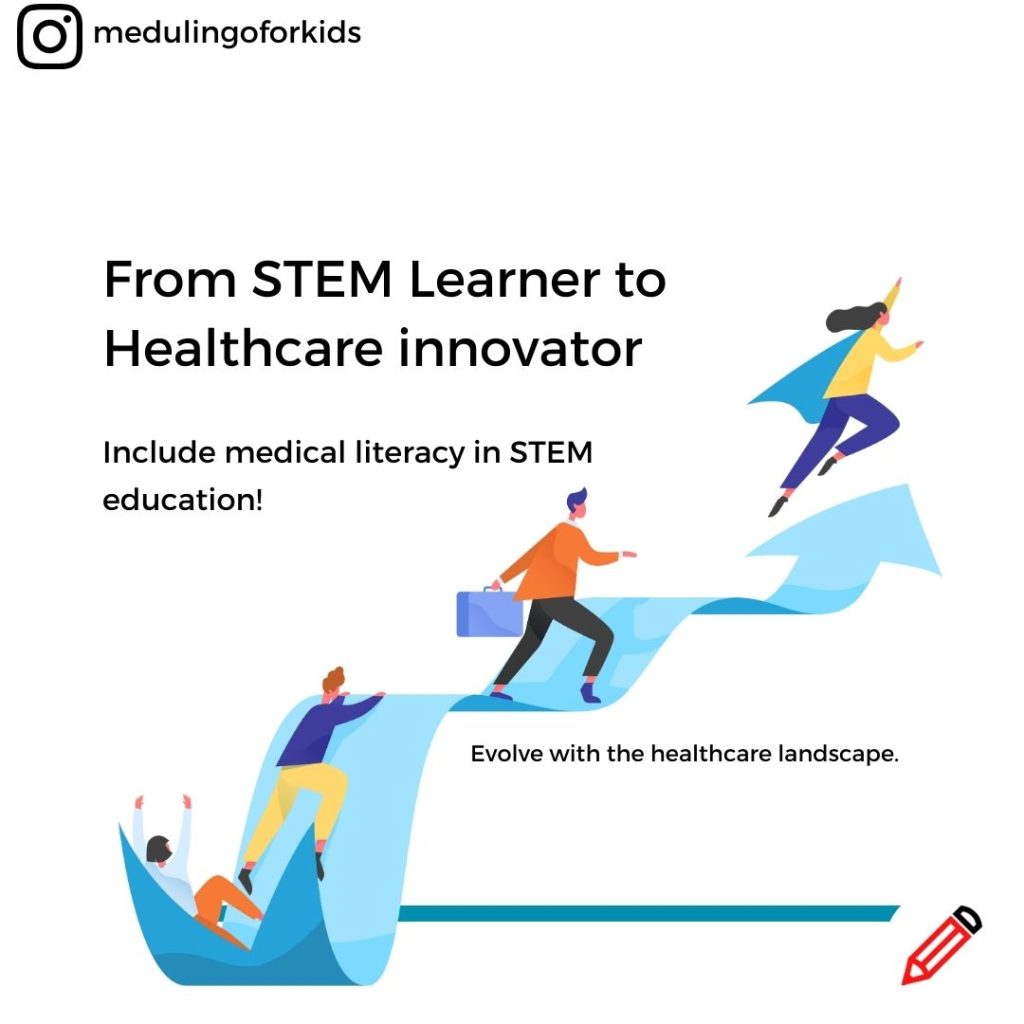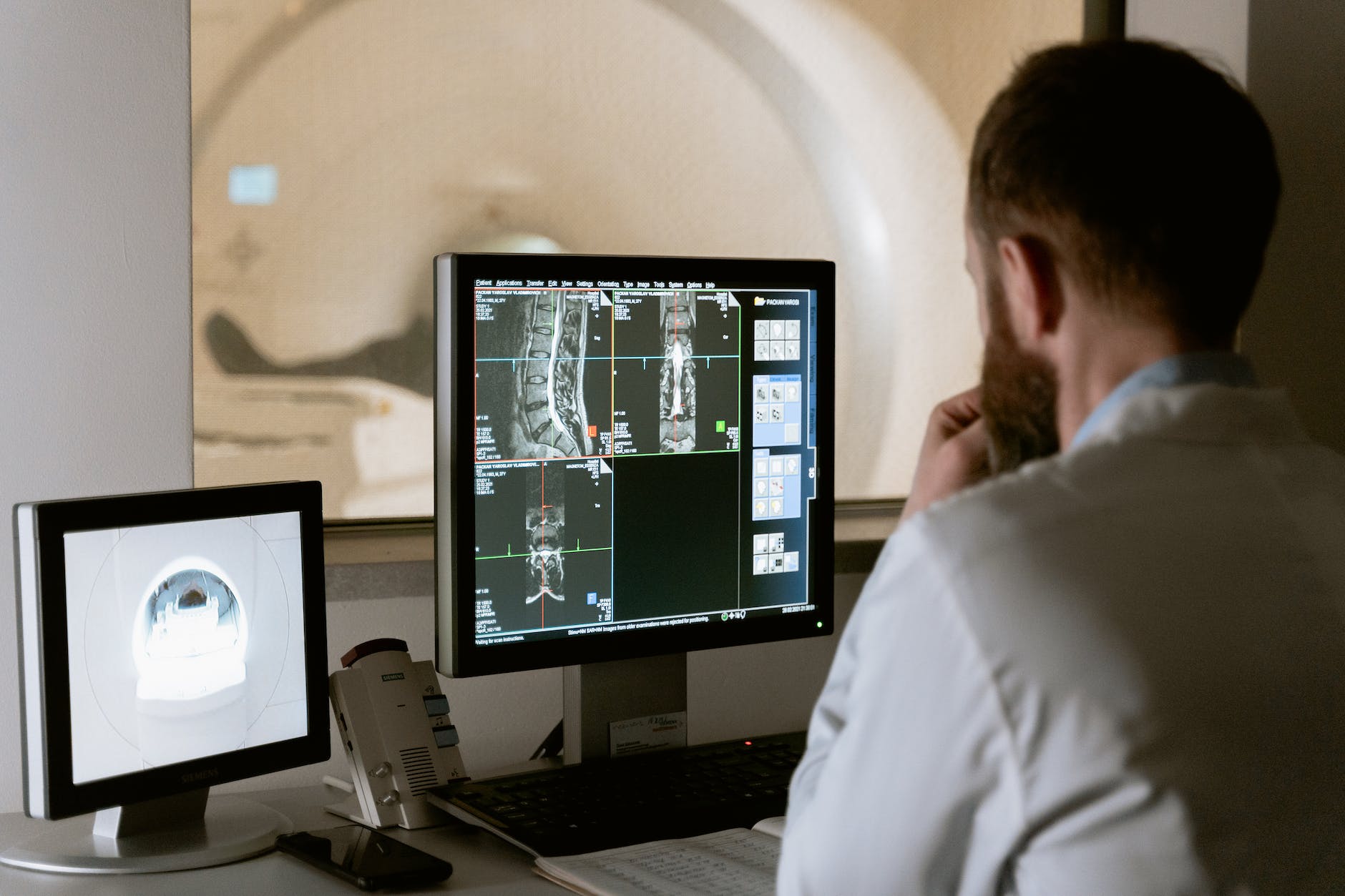The pursuit of scientific knowledge and technological advancements intertwines with critical aspects of healthcare and medical sciences for healthcare innovators. In this context, the term “medical literacy” emerges as a pivotal component, encompassing essential skills and knowledge necessary to navigate the intricacies of healthcare systems, comprehend medical information, and make informed decisions. Advocating for the inclusion of medical literacy, rather than solely health literacy, in school STEM programs is vital in cultivating a generation of informed and innovative individuals poised to shape the future of healthcare.

Defining Medical Literacy
Medical literacy encompasses a spectrum of competencies that enable individuals to comprehend, evaluate, and utilize health-related information effectively. It involves understanding medical terminology, deciphering complex health data, critically evaluating health information sources, and engaging in informed discussions regarding healthcare decisions. Individuals with high medical literacy possess the skills necessary to navigate healthcare systems, comprehend treatment options, and actively participate in their healthcare journey.
Including Medical Literacy in STEM Education
STEM education, with its focus on science, technology, engineering, and mathematics, presents an opportune platform to incorporate medical literacy. Unlike health literacy, which addresses a broader range of everyday health-related decisions, medical literacy delves deeper into understanding medical terminology, procedures, diagnostics, and the scientific underpinnings of healthcare.
Empowering Future Healthcare Innovators
Integrating medical literacy into STEM programs equips students with a comprehensive understanding of the scientific aspects of healthcare. It fosters critical thinking, problem-solving skills, and data analysis abilities necessary for interpreting medical research, understanding disease mechanisms, and engaging in innovative solutions within the healthcare domain. By nurturing medical literacy, STEM education empowers future healthcare professionals and innovators to address complex health challenges with scientific rigor and innovation.
Preparing for Evolving Healthcare Landscapes
In today’s rapidly evolving healthcare landscapes, technological advancements and scientific breakthroughs drive progress. Medical literacy within STEM education cultivates a workforce prepared to navigate these complexities, innovate new technologies, and contribute meaningfully to healthcare advancements. It prepares students to embrace interdisciplinary approaches, incorporating knowledge from STEM fields into healthcare innovations.
Strategies for Integration
Integrating medical literacy into STEM education involves:
-
- Incorporating medical literacy activities, healthcare-related case studies, and real-world scenarios into STEM curriculum.
-
- Offering courses or modules specifically focusing on medical sciences within STEM programs.
-
- Facilitating interactions with healthcare professionals, fostering mentorship opportunities and real-world exposure.
-
- Utilizing technology to simulate medical procedures or experiments, offering hands-on experiences.
Fostering Healthcare Innovators with Medical Literacy in STEM Education
Incorporating medical literacy into school STEM programs represents a paradigm shift in preparing students to become informed and innovative contributors to the healthcare landscape. It equips them with the knowledge, skills, and critical thinking abilities necessary to navigate the complexities of healthcare, contribute to scientific advancements, and address healthcare challenges through a STEM lens.
By emphasizing medical literacy within STEM education, schools not only nurture future healthcare professionals but also cultivate a generation of scientifically literate individuals capable of driving transformative innovations and advancements at the intersection of STEM and healthcare.
Interested in teaching medical literacy pain free? Shop medical literacy resources!

This article was drafted by ChatGPT and edited by Joan Lee Tu, the founder of MedULingo.com.
You may also be interested in the following articles:
Why Medical Literacy Needs To Be In Your School STEM Program
Why a Robust STEM Education Program Needs to Include Medical Literacy
20 Benefits of Including Medical Literacy in Your STEM Program
How Medical Literacy Activity Books Empower Learners in STEM Education
How to Empower Future STEM Innovators with Self-Directed Learning in Medical Literacy
Why STEM Education Needs Medical Literacy to Foster Healthcare Innovators
Why You Need Diverse Learning Modalities for Medical Literacy
Building Foundational Medical Literacy Skills in STEM Education
Four Cs of Medical Literacy: Comprehension, Conversation, Communication, Collaboration

